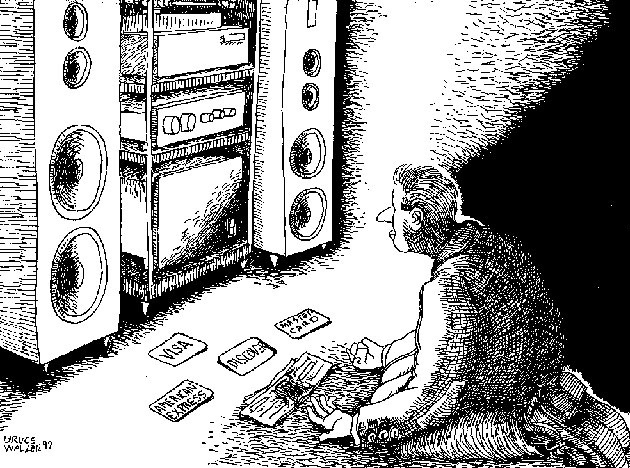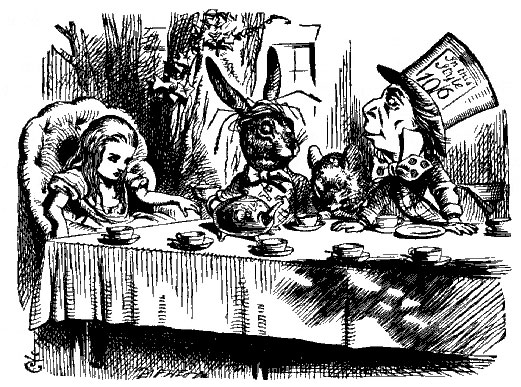Roger Skoff, a portrait, Orange County, CA, 2023 (photograph and image processing by David W. Robinson)
Roger Skoff writes about why things cost what they do
Like everything else, the cost of HiFi gear has escalated over the last few years. Some might say that that's just because the whole world is caught in an inflationary spiral and, to an extent they might even be right. With HiFi, though, there are other factors to consider, and they may be far more important overall. I'm going to write here about some very basic ideas on why things cost what they do. Hopefully it will be of some help. This isn't , though, anything more than just a brief attempt to scratch the surface of how things work, however, so don't attack me if it isn't any more than it is. I hope, though, that it will give you at least some clue to what's going on, in HiFi, and even in other things that you buy.
One of the things we all automatically seem to assume when we see the prices of our hobby gear going up is that the products we're buying are getting better, that they're based on new, more costly and time-consuming R&D, and made of better materials by more highly skilled and expensive labor. Progress is a basic assumption; it's just naturally assumed to cost more; and we can all understand how higher cost of production can result in higher prices.
What if I were to tell you, though, that that's only half true? Higher cost of production may very well drive up a product or service's asking price, but it has nothing to at all to do with the actual price any good sells for. Want an example? How about (okay, we'll do the obvious, even though you all know I'm a cable manufacturer) the cable made of unspeakably expensive 99.999999% pure Unobtanium, insulated with captive vacuum, jacketed with hand-woven spider silk, and made by ninja assemblers paid over US$1000 an hour? How about if, despite all that and an MSRP of US$80,000 per meter, it sounds like crap? What will it actually sell for?
The fact of it is that, depending on who the buyer is, why he's buying it, on whose advice, under what circumstances, it might not sell at all, might sell for its asking price, or might eventually be liquidated for just a few dollars per meter/pair or even sold off by the pound as scrap. What it cost to make makes no difference at all.
"The Final Tweak." Drawing by Bruce Walker, 1992.
For a real illustration of this, although from another field, consider that electric cars are so expensive to produce and are selling in such small volume that (NOT based on poor performance) most manufacturers are losing an average of somewhere in the range of US$6,000 on every one that they sell. Obviously, cost of production isn't determining what they sell for.
The only thing that a product's cost of production can be certain to affect is whether or not any more of it will ever be produced. Certainly, no more of that hypothetical cable would be, and, without government mandates, subsidies and tax breaks, no electric cars might be, either.
So, what does determines the real price a product will sell for? The conventional answer is "supply and demand," and the usual assumption is that the greater the demand for any good, and the smaller the supply, the higher its price will be, and vice versa. The fact, though, is that there are really three factors that determine sale price: Supply, demand, and the availability of substitutes.
Consider the cost of anything—make it something simple, like a loaf of bread: As long as the price stays in a range that people are willing to pay and that's what they want to buy, supply and demand will be the determining factors on the price of whatever kind of bread product we're talking about. Let's suppose, though, that we're in inflationary times such as these, when a loaf of bread can easily cost more than five dollars. That's when the third factor comes in and, instead of (that kind/brand of) bread, buyers may choose to either buy something else or simply not to buy anything at all. There are always those two options, and they result in something called price elasticity of demand, where the more expensive something is, the less of it is likely to be sold, and the cheaper it is, the more.
There's also one more thing that's worth mentioning—especially as regards High-End audio and other luxury goods: the "Giffen Paradox," which is where, seemingly against all reason, as prices go up so does the quantity of goods sold!
So, given all of the above, How does HiFi pricing happen? And what does that mean for our own purchases and the future of our industry? To see what's going on here, let's take a look at it from the point-of-view of one (hypothetical) well-established amplifier manufacturer.
Three important things are in effect, right now, that are affecting audiophile prices. First, there's the economy, both in the US and abroad, which has undergone in recent years a level of inflation not seen for decades. Second is the fact that HiFi, both High-End and the more popular products we call "MidFi," has been losing sales and market demand in recent years. I and many others in and around our industry have all written about how the general public has lost interest in high fidelity sound reproduction, with a large part of the populace—especially the young—not even knowing what the words "HiFi" or "stereo" mean, let alone having a new one on their shopping list. Third is the fact that most audiophiles are aging and, whether by passing, or simply because they already have all the gear they want, dropping out of the market.
Given all that, it's understandable how our hypothetical amplifier manufacturer—even though nothing about his product has changed—may be moved to raise his prices.
The fact of inflation means that at least much of his audience simply doesn't have the budget for a new amp right now, so they are, whether just for now, or permanently, putting off that purchase. There are also fewer dealers to sell his products for him. (The number of active HiFi dealers in the US has been declining for years). The result is that fewer products are being sold.
Making fewer sales, but still having the same overhead (factory mortgage or rent, office and supervisory staff—all the things that stay the same regardless of how many amplifiers he sells, which economists term "fixed costs")—means that even if his cost of parts, labor, packaging, and everything else related to production remains unchanged, his unit cost per product will go up!
Just the fact of the same overhead divided among fewer amplifiers sold will mean—because it's ultimately only the sales of his amps that pays his bills—that his cost per amplifier will increase. When you add to that actual increases in other costs (parts, labor, outside services), it can actually get to the point where the manufacturer is forced to decide whether to raise prices or go out of business.
Now is where it starts to get interesting. I'll finish this in Part 2, next month. Until then, good sound and happy listening to you!
Alice in Wonderland drawing by Sir John Tenniel, and now in the public domain.




































